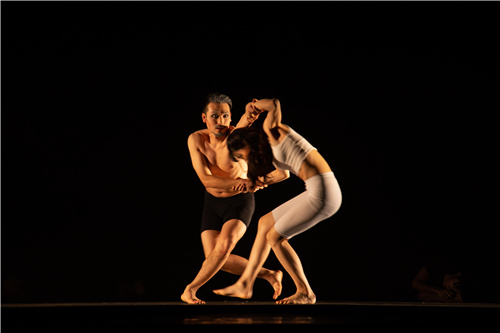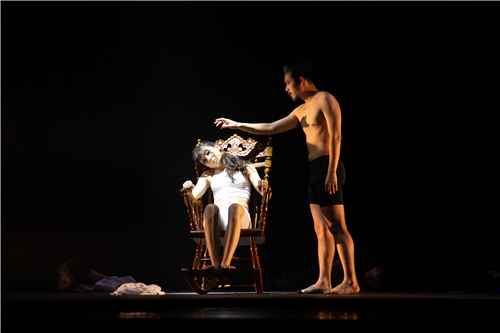
Director: Min-Ho Kang
Playwright: Samuel Beckett
Institution: Chung-Ang University
Venue: Chung-Ang University, Korea
Time: 19:30, May 16, 2018
Event: 5th Asian Theatre Schools Festival

Director’s Notes
Molloy or Molloz refers to "Molly", the absolute mystic herb that can cure every illness and save anybody. Therefore, we want to be saved from the loss and pain from our society, but we also doubt whether it is a valid hope or not.
Contemporary people constantly look for "Molly," but throughout the process, they become standardized, lose themselves, and eventually face the desperate and marginal situation where they have all become Molloy (male) or Molloz (female) themselves. Molly in this work, also leaves to search for "Him". Mollang, in part 2, also starts to wander around with his son to find "Molly." These two characters choose to leave in order to recover their ruined relationships, but it is already desolate.
The play ends with two weary beings staring at each other, rather than seeing hope or a hint of resolution. Their cries are shown through them "Hugging each other (Molly and Mollang, and 'He' or the mother)." The embrace between them is nothing but desperate in their longings.

Synopsis
Running Time: 60minutes
1. Vivify the Feeling of a Typical Absurd Theatre.
- It consists of 11 chapters, which includes a prologue and an epilogue
-It focuses on the emotions and the background atmosphere of the characters, rather than the probability of the story.
- It intends to strongly stimulate the sentiment of the audience by using diverse metaphorical objects (e . g . cane bicycles, flowers and pebbles), which are used to visualize the common theme and objects in many of Beckett's plays.
-It focuses on the absurd theatrical approaches to characters such as bizarre or childish behaviours based on choreographic expressions.
-Actors should practice to show a kind of passive humour, the unique feature of the absurd theatre.
- It borrows main scenes and characters from “Waiting for Godot", " I Am Not", "Endgame" , "Come and Go” , “Quad”, “Lullaby”, and “Happy Days”.
- The hardships like the absence of relationships and distortions that Beckett's characters share is used as the main frame of characterization.
2. Borrowing the Storyline from Molloy.
-The story of Molloy is not linear at all, but it's more structured than other of Beckett's plays. Plus, the story focuses on the common relational features of "Molly Searching for Her Mother” and “Mollang Leaving with His Son”.
3. Juxtaposing the Scenes in Part 1 and Part 2 of the Novel Molloy by Controlling the Images and Its Contents.
- Molly's scene, which begins with the first scene of "I am not." is placed again at the climax of Part 2 of Mollang. It highlights the absurdity in its parallel structure well.
- The Gogo and Didi scene of "Waiting for Godot" is modified and juxtaposed at the end of both Act 1 and Act 2.

